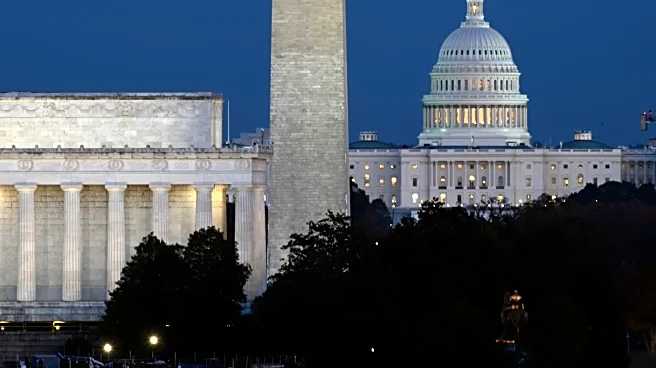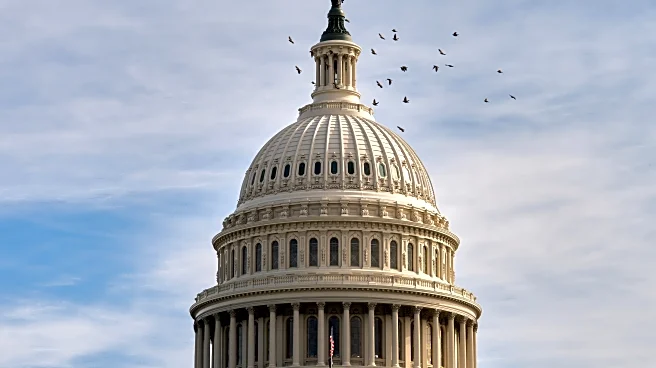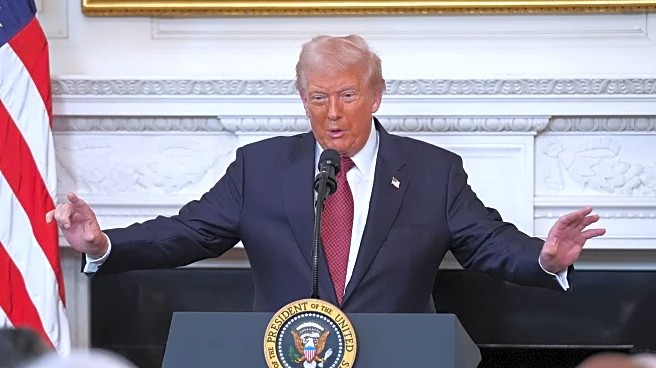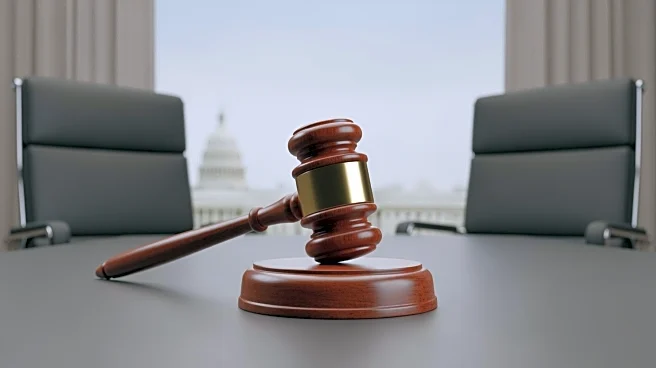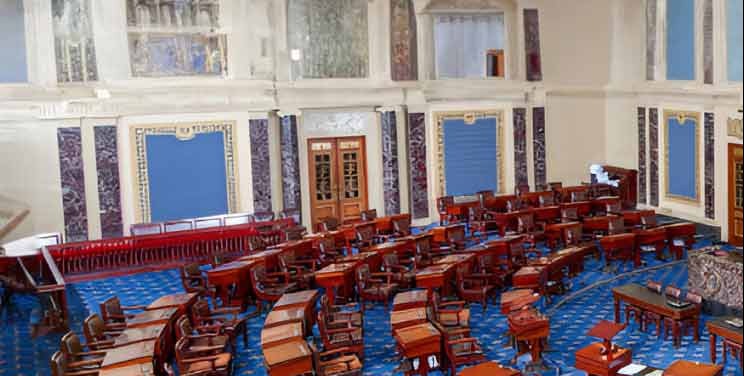What's Happening?
A bipartisan group of U.S. lawmakers has reported slight progress in negotiations aimed at ending the ongoing government shutdown, which is on the verge of becoming the longest in U.S. history. The discussions
are focused on reaching an agreement on a package of full-year appropriations bills for certain agencies, alongside a stopgap bill to temporarily reopen the rest of the government. Senators from both parties have acknowledged that while many details remain unresolved, the ongoing conversations have been productive. Key figures in the negotiations include Senate Minority Leader Chuck Schumer, D-N.Y., and Senate Majority Leader John Thune, R-S.D. The Senate has rejected a House-backed continuing resolution for the 14th time, indicating the need for a new resolution with a later expiration date.
Why It's Important?
The resolution of the government shutdown is crucial as it affects numerous federal agencies and their operations. The shutdown has significant implications for federal employees, contractors, and the general public who rely on government services. The ongoing negotiations and potential resolution could restore normalcy and prevent further economic disruptions. The bipartisan nature of the talks suggests a willingness to compromise, which could set a precedent for future legislative negotiations. The outcome of these discussions will impact the fiscal policies and budget allocations for the upcoming year, influencing various sectors dependent on federal funding.
What's Next?
The next steps involve finalizing the details of the appropriations bills and the continuing resolution. Lawmakers are working to ensure that the new resolution has a feasible expiration date to avoid another shutdown. The Senate and House must reconcile their differing fiscal 2026 appropriations bills, which have introduced varying levels of budget cuts. The progress in these negotiations will be closely monitored by political leaders, federal employees, and the public, as the resolution will determine the operational status of the government and its agencies.




